5 Castle Street, Aberdeen, Aberdeen, AB11 5BQ
Dubbed the Architect of Aberdeen, Archibald Simpson designed several important buildings in his native city. His masterpiece is this former bank, now this Wetherspoon pub. He also designed Marischal College (University of Aberdeen) and St Andrews Cathedral.
A photograph, print and text about The Archibald Simpson.
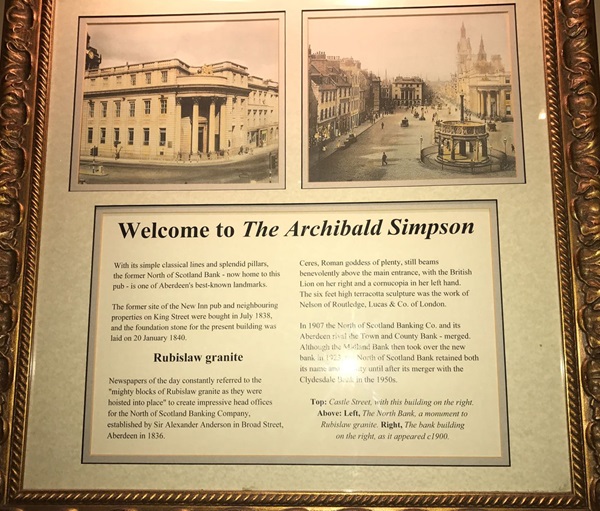
The text reads: With its simple classical lines and splendid pillars, the former North of Scotland Bank – now home to this pub – is one of Aberdeen’s best-known landmarks.
The former site of the New Inn pub and neighbouring properties on King Street were bought in July 1838, and the foundation stone for the present building was laid on 20 January 1840.
Newspapers of the day constantly referred to the “mighty blocks of Rubislaw granite as they were hoisted into place” to create impressive head offices for the North of Scotland Banking Company, established by Sir Alexander Anderson in Broad Street, Aberdeen in 1836.
Top: Castle Street, with this building on the right
Above: left, the North Bank, a monument to Rubislaw granite, right, the bank building on the right, as it appeared c1900.
Prints and text about the theatrical heritage of Aberdeen.
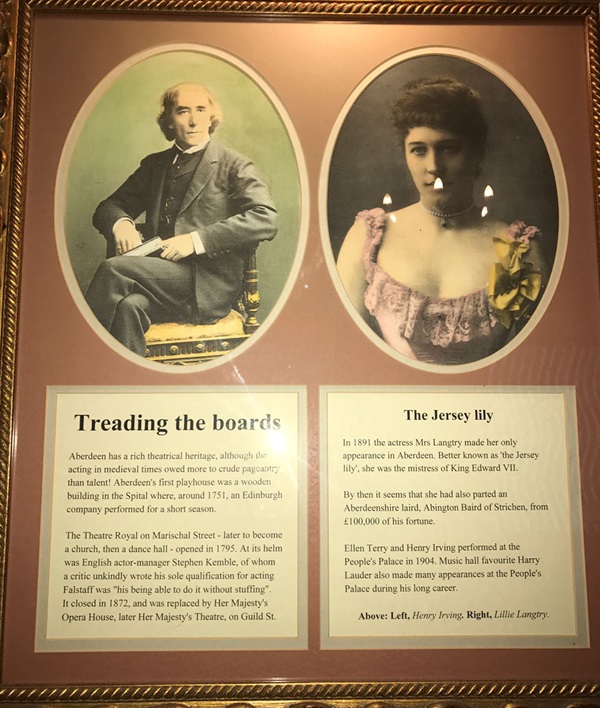
The text reads: Aberdeen has a rich theatrical heritage, although the acting in medieval times owed more to crude pageantry than talent! Aberdeen’s first playhouse was a wooden building in Spital where, around 1751, an Edinburgh company performed for a short season.
The Theatre Royal on Marischal Street – later to become a church, then dance hall – opened in 1795. At its helm was English actor-manager Stephen Kemble, of whom a critic unkindly wrote his sole qualification for acting Falstaff was “his being able to do it without stuffing”. It closed in 1872, and was replaced by Her Majesty’s Opera House, later Her Majesty’s Theatre, on Guild Street.
In 1891, the actress Mrs Langtry made her only appearance in Aberdeen. Better known as ‘the Jersey lily’, she was the mistress of King Edward VII.
By then it seems that she had also parted an Aberdeenshire laird, Abington Baird of Strichen, from £100,000 of his fortune.
Ellen Terry and Henry Irving performed at the People’s Palace in 1904. Music hall favourite Harry Lauder also made many appearances at the People’s Palace during his long career,
Above: Left, Henry Irving
Right: Little Langtry.
A portrait of Archibald Simpson.
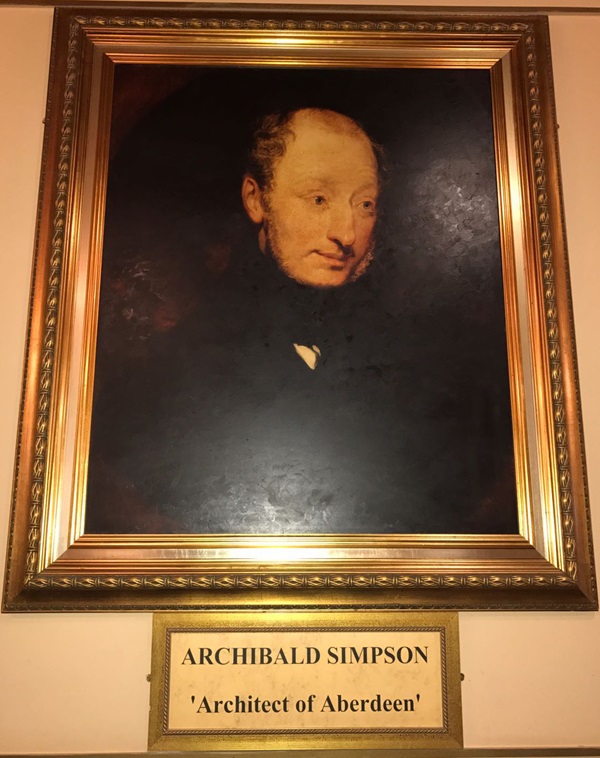
An illustration and text about The New Inn.
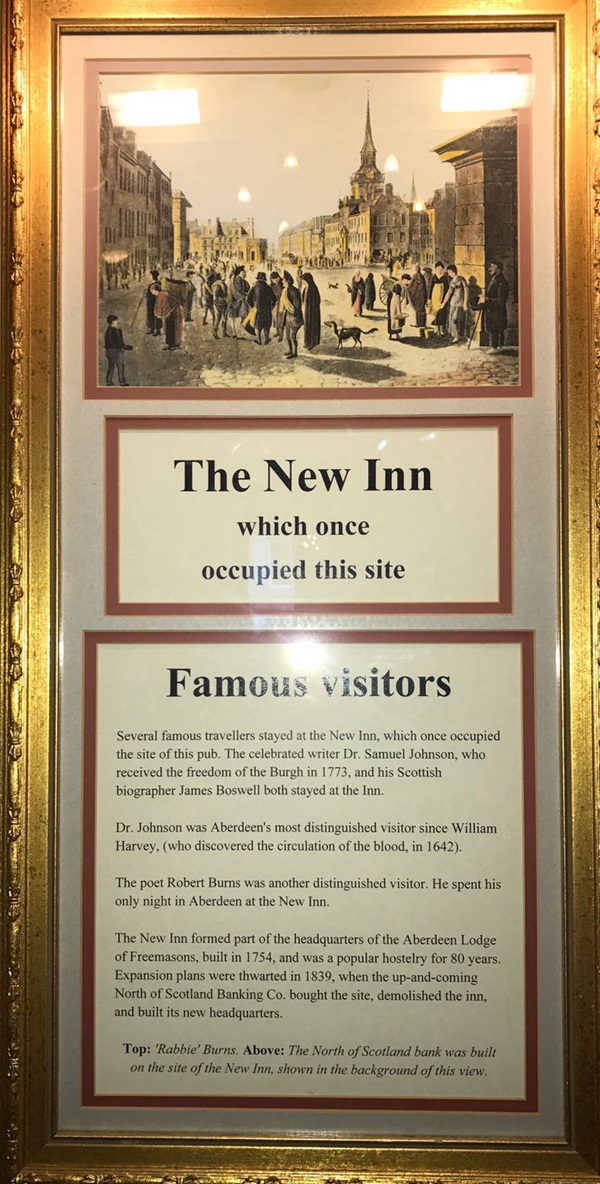
The text reads: Several famous travellers stayed at The New Inn, which once occupied the site of this pub. The celebrated writer Dr Samuel Johnson, who received the freedom of the Burgh in 1773, and his Scottish biographer James Boswell both stayed at the Inn.
Dr Johnson was Aberdeen’s most distinguished visitor since William Harvey, (who discovered the circulation of blood, in 1642).
The poet Robert Burns was another distinguished visitor. He spent his only night in Aberdeen at The New Inn.
The New Inn formed part of the headquarters of the Aberdeen Lodge of Freemasons, built in 1754, and was a popular hostelry for 80 years. Expansion plans were thwarted in 1839, when the up-and-coming North of Scotland Banking Company bought the site, demolished the inn, and built its new headquarters.
Above: The North of Scotland Bank was built on the site of The New Inn, shown in the background of this view.
A photograph of Union Street, Aberdeen, c1909.
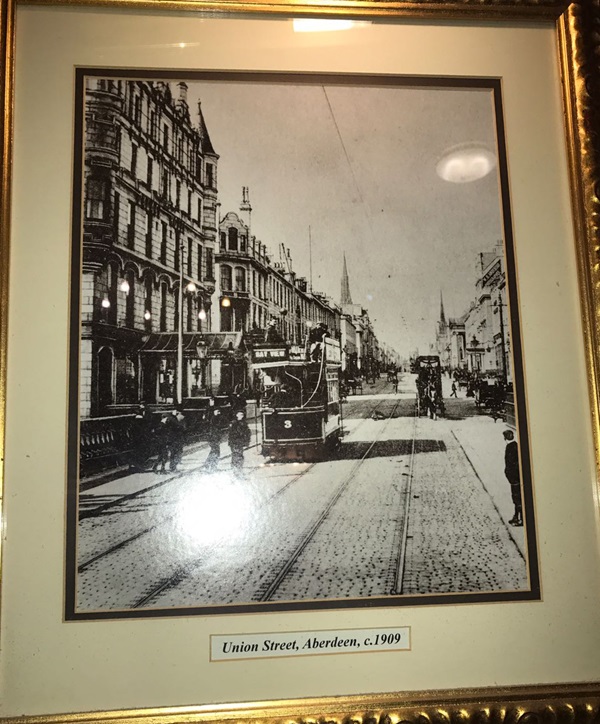
A photograph of Castle Street and Municipal Building, Aberdeen, c1909.
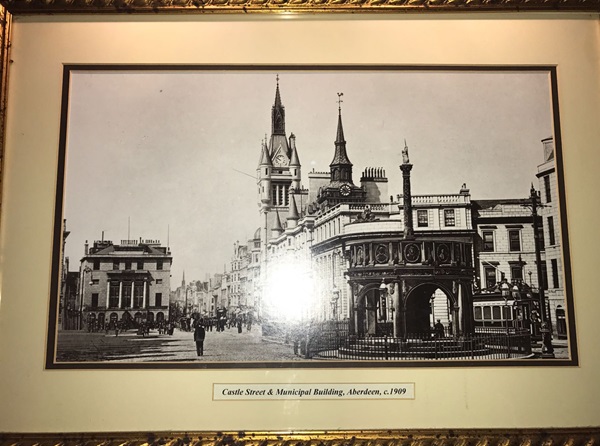
A photograph of the harbour, Aberdeen, c1910.
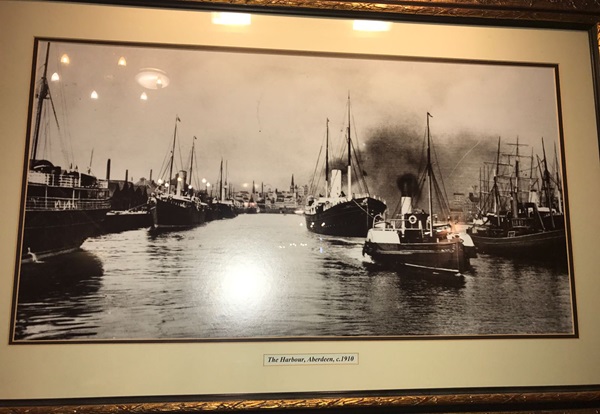
A photograph of Castle Street, Aberdeen, c1910.
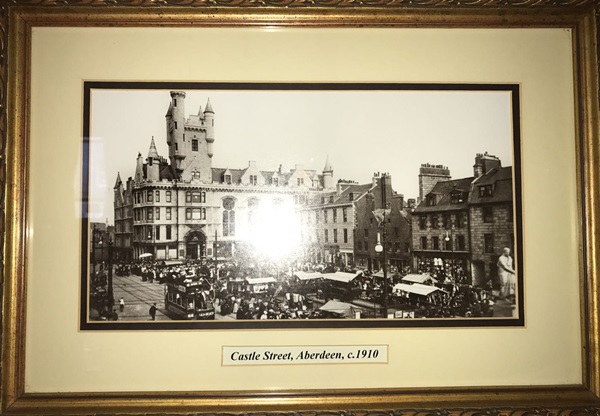
A photograph of Union Street, Aberdeen, c1926.
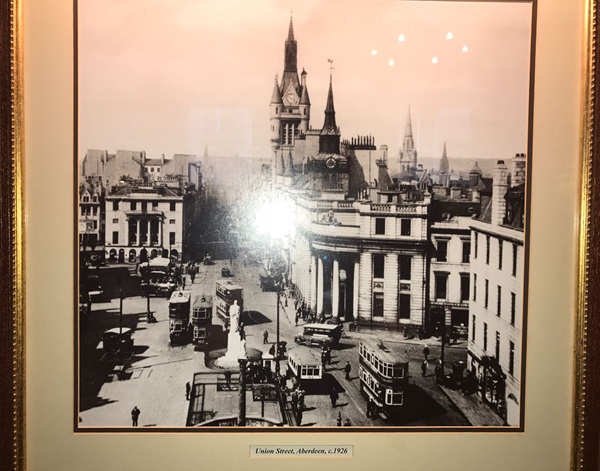
A photograph of Union Street, Aberdeen, c1908.
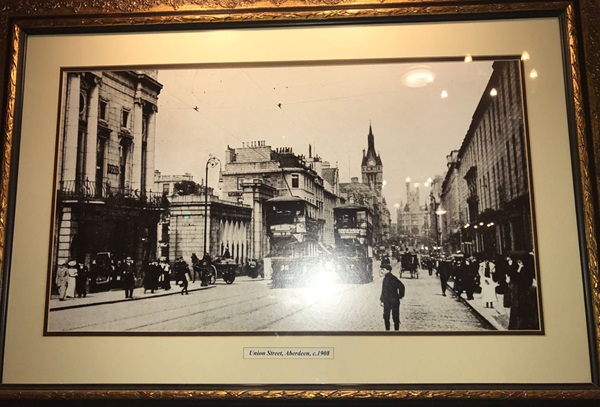
A photograph of Guild Street, Aberdeen, c1905.
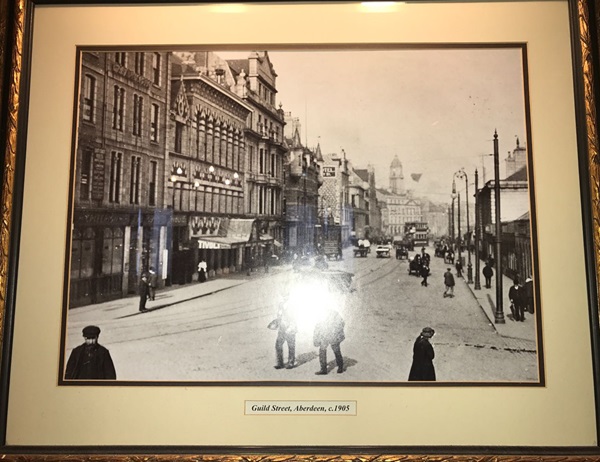
A photograph of Union Street, Aberdeen, c1922.
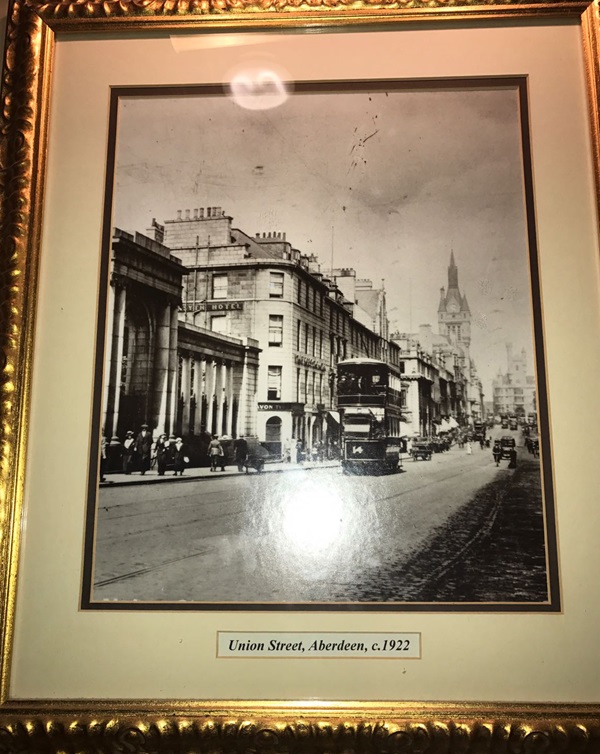
An illustration and text about Provost Skene’s House.
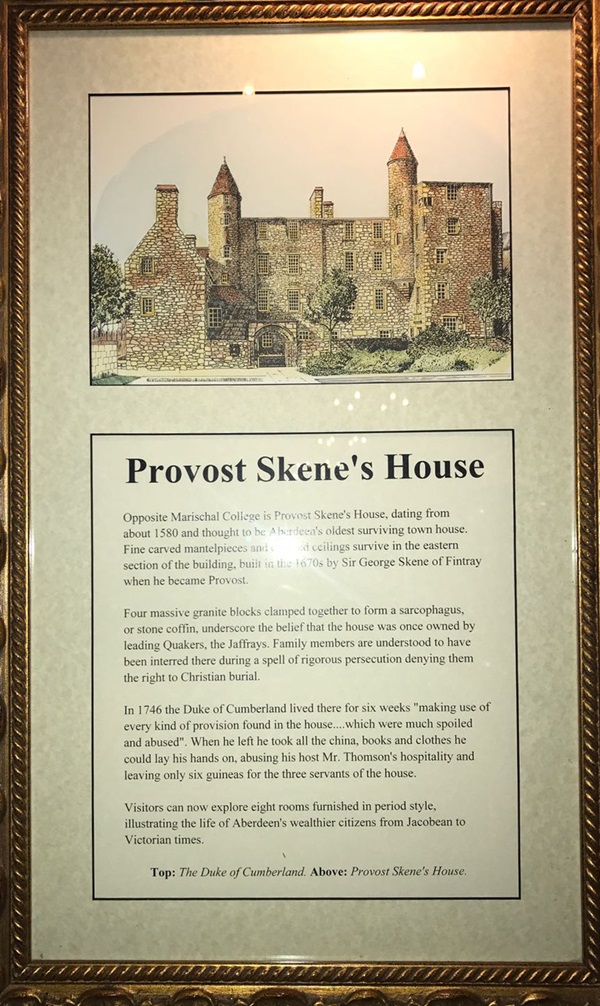
The text reads: Opposite Marischal College is Provost Skene’s House, dating from about 1580 and thought to be Aberdeen’s oldest surviving town house. Fine carved mantelpieces and ceilings survive in the eastern section of building, built in the 1670s by Sir George Skene of Fintray when he became Provost.
Four massive granite blocks clamped together to form a sarcophagus, or stone coffin, underscore the belief that the house was once owned by leading Quakers, the Jaffrays. Family members are understood to have been interred there during a spell of rigorous persecution denying them the right to Christian burial.
In 1746 the Duke of Cumberland lived there for six weeks “making use of every kind of provision found in the house… which were much spoiled and abused”. When he left he took all the china, books and clothes he could lay his hands on, abusing his host Mr Thomson’s hospitality and leaving only six guineas for the three servants of the house.
Visitors can now explore eight rooms furnished in period style, illustrating the life of Aberdeen’s wealthier citizens from Jacobean to Victorian times.
Top: The Duke of Cumberland
Above: Provost Skene’s House.
External photograph of the building – main entrance.
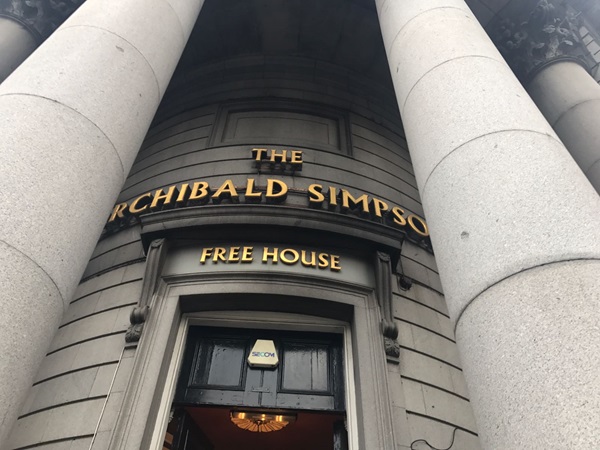
If you have information on the history of this pub, then we’d like you to share it with us. Please e-mail all information to: pubhistories@jdwetherspoon.co.uk